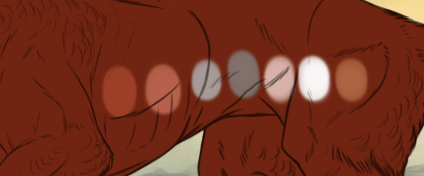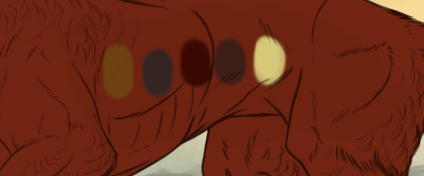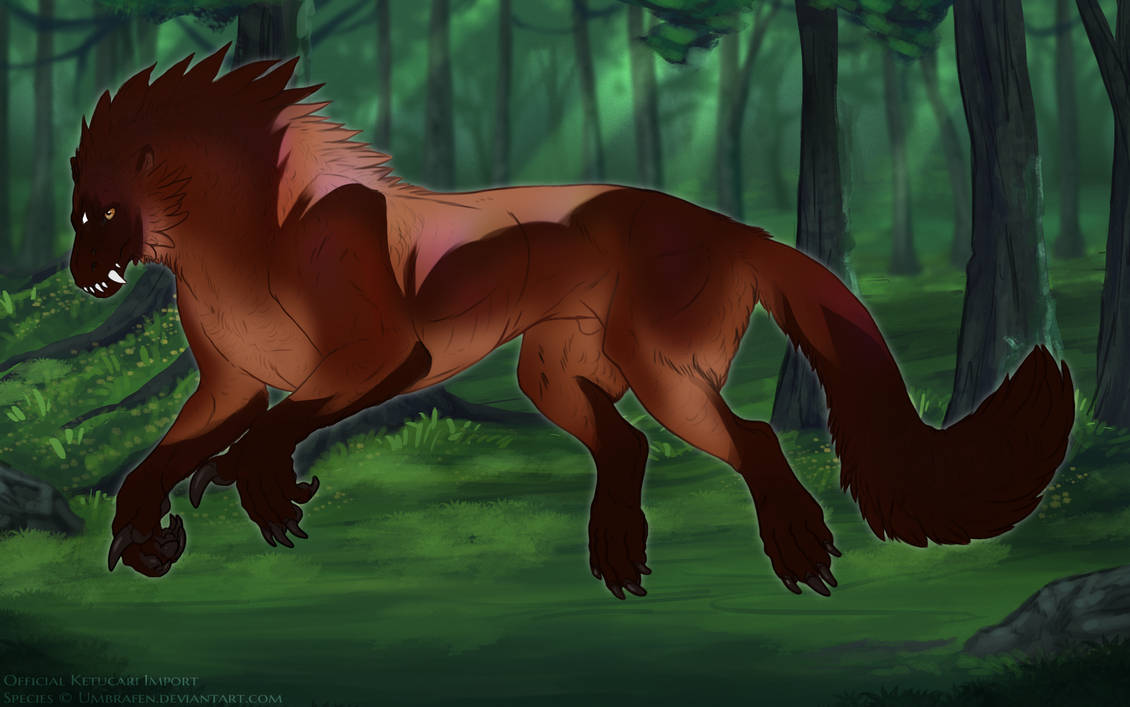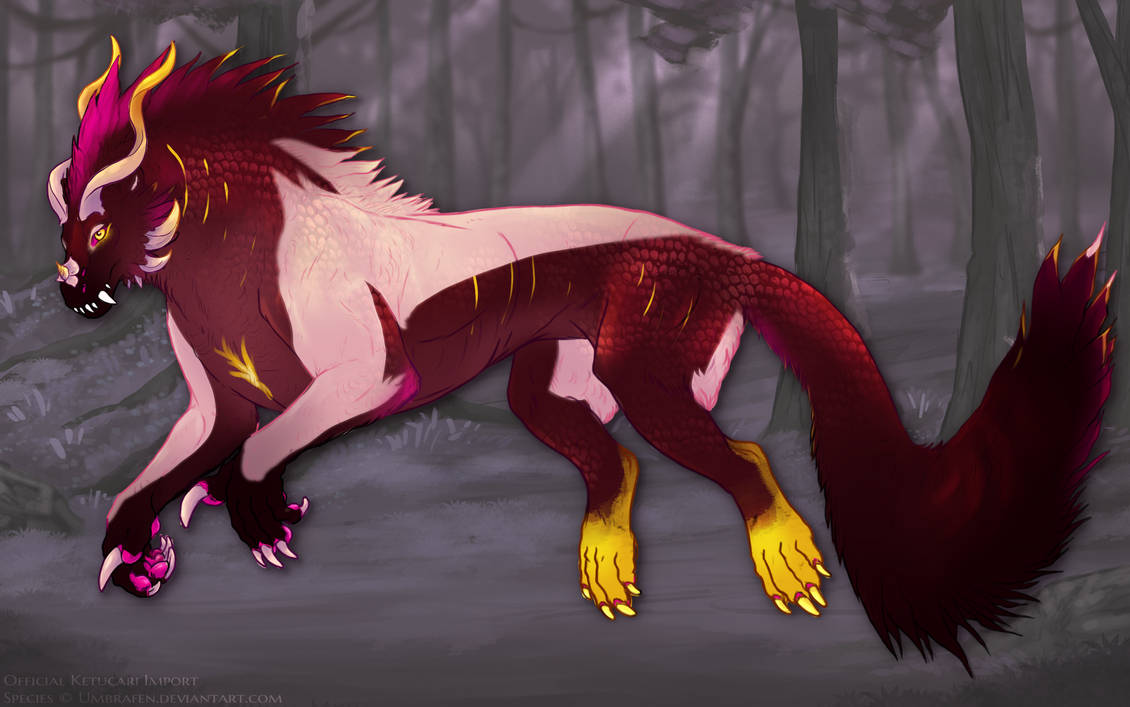Pale
Examples
Basics
Color

These colors would be acceptable for this base color. They are either a lighter version of the base, or a lighter and desaturated version of the base. The last color on the right shows a minor deviation in hue, and is slightly more yellow than the base itself. Notice that this small change is not overbearing.

These colors would be unacceptable for pale. They are either darker than the base coat or have too drastic a hue shift.
Interaction with Other Genes
When designing 'pale striping', keep in mind the limits to the thickness of your striping. Pale striping should never resemble lightning piebald in its thickness and consistency.
Pale can alter the following genes:
Striping, barring, mantle, lace, acid, melanistic pastel, koi, marble, strand, chain, dusky points, girin, skink, spaulder, sable.
If affecting sable, sable must go under at least one other gene if other genes are present.




